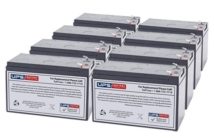In this experiment, we are going to see up close the “short circuit” occurrence that is sometimes observed in our homes. Keep in mind that short circuit is dangerous especially when high magnitude of current is involved. Although we will only use a 6-volt or 12-volt lantern battery that produces small amount of current, observe safety at all times.
About the Experiment
Collect these materials from your old electronic kit box or nearest electronic supply store.
- 6-volt or 12 volt fresh lantern battery
- 8 to 12 inches copper wire with alligator clips on both ends
- 5 to 6 inches strand of very fine iron wire (about the size of a hair strand)
With caution, do the following.
a) Connect one alligator clip to one of the battery terminals.
b) Secure one end of the fine iron wire to the other battery terminal.
c) Clip the other end of the copper wire at the far end of the fine iron wire. Observe what will happen within 4-5 seconds.
d) Move the clip on the thin wire about an inch towards the battery terminal.
e) Continue moving the clip until you see the final striking result.
Short Circuit Experiment Set-up
Image Source: Exploratorium Website
What causes the fine iron wire to melt is the “short circuit” effect. You can also do this experiment by using ¼ inches wide and 6 inches long aluminum foil. Watch out for the striking colors when you short circuit the foil.
Short Circuit – How Does It Occur?
What happened in this experiment can be explained by the property of conductors known as “resistance”. In electric circuits, resistance is the hindrance to the flow of electric current. The diameter and length of the wire affects its resistance. The copper wire with wide diameter has lower resistance. The fine iron wire with small diameter has higher resistance. This high resistance caused the iron wire to heat up. Longer wire has more resistance than a shorter one. When the clip was moved closer to the battery terminal, the resistance of fine iron wire was reduced – as the length of wire in use was also reduced. But since the same amount of voltage was applied, what happened is that more current was flowing through the iron wire. The wire heated up more and then eventually melted down.
Short circuit happens in our appliances when current finds a way to flow on a path that has lower or no resistance at all. A fuse is a device that prevents damage to appliances due to short circuit. It is usually connected in series with a wire connected to one of the terminals of the voltage supply. Inside a fuse is a thin wire where current normally flows. When too much current flows into the fuse due to a short circuit, the wire heats up and then blows up causing the flow of current to be cut off immediately.
Related articles:




